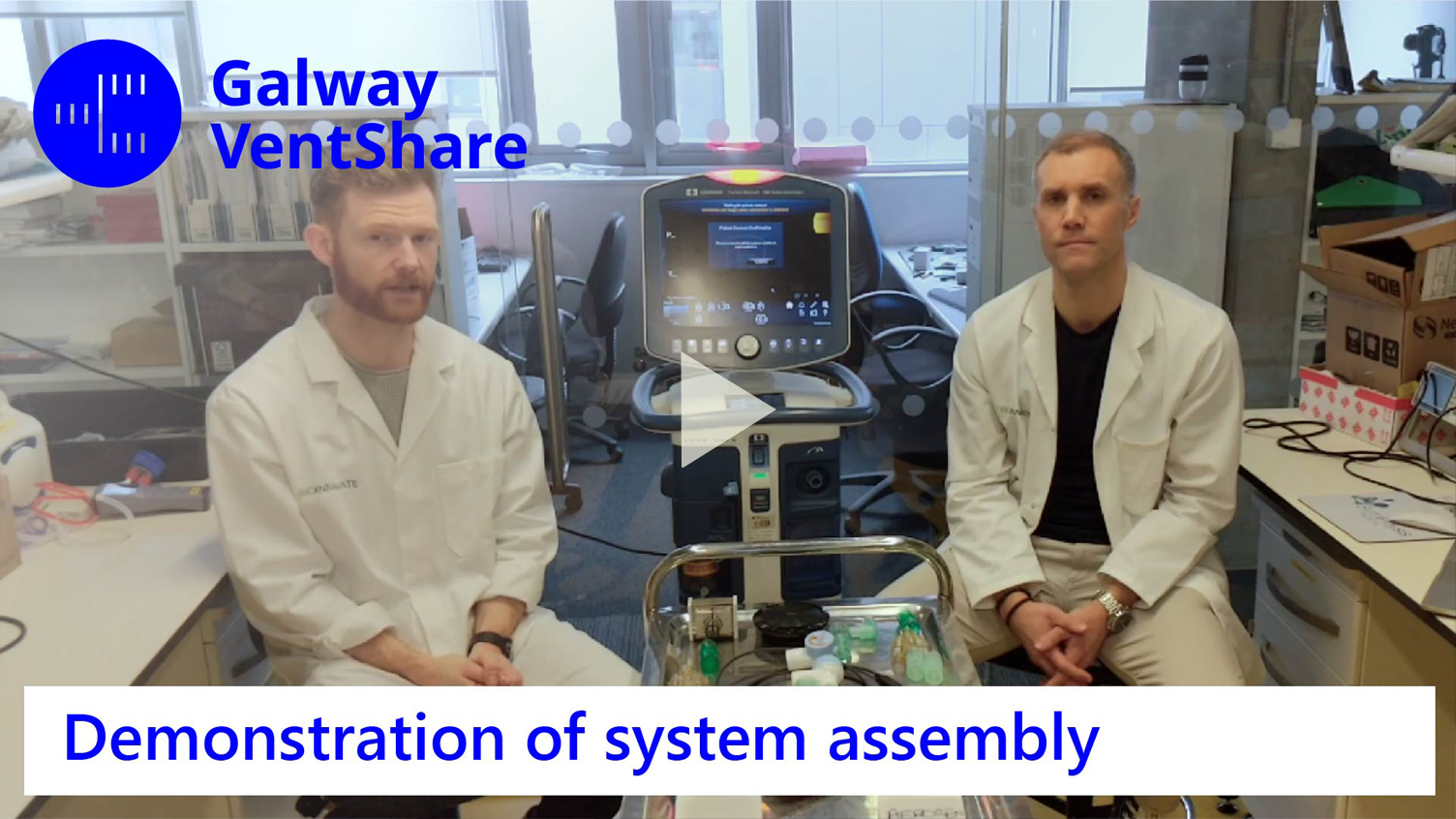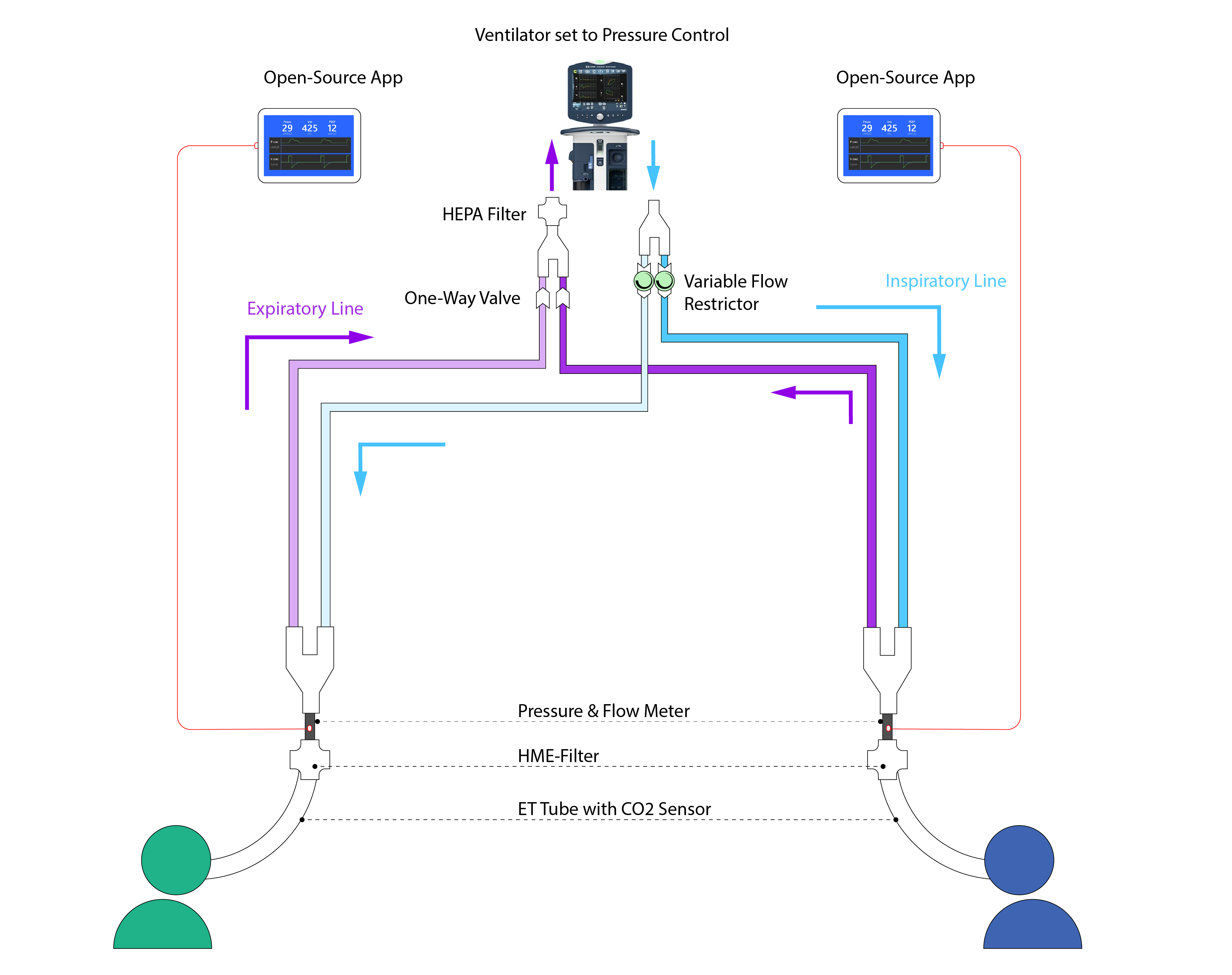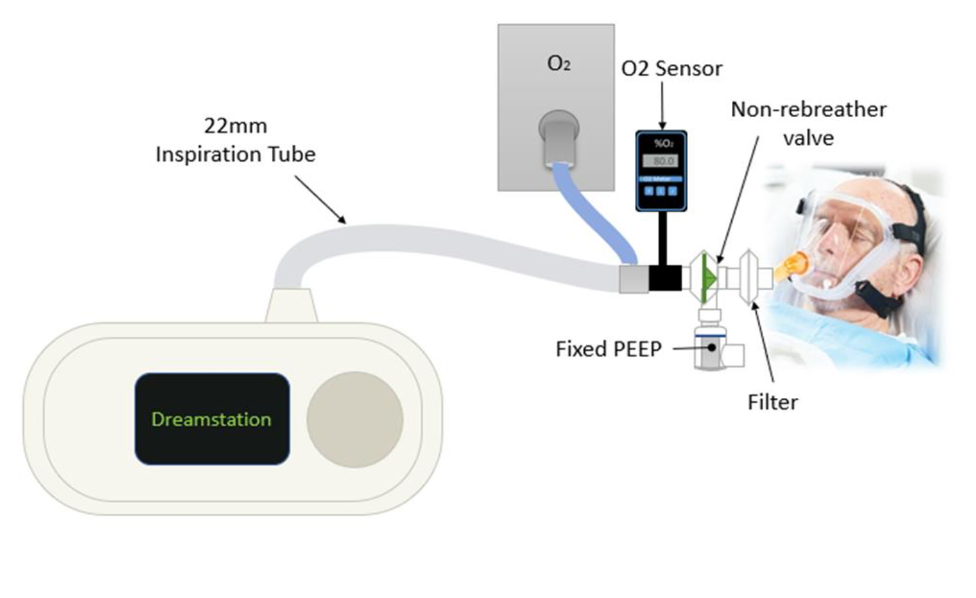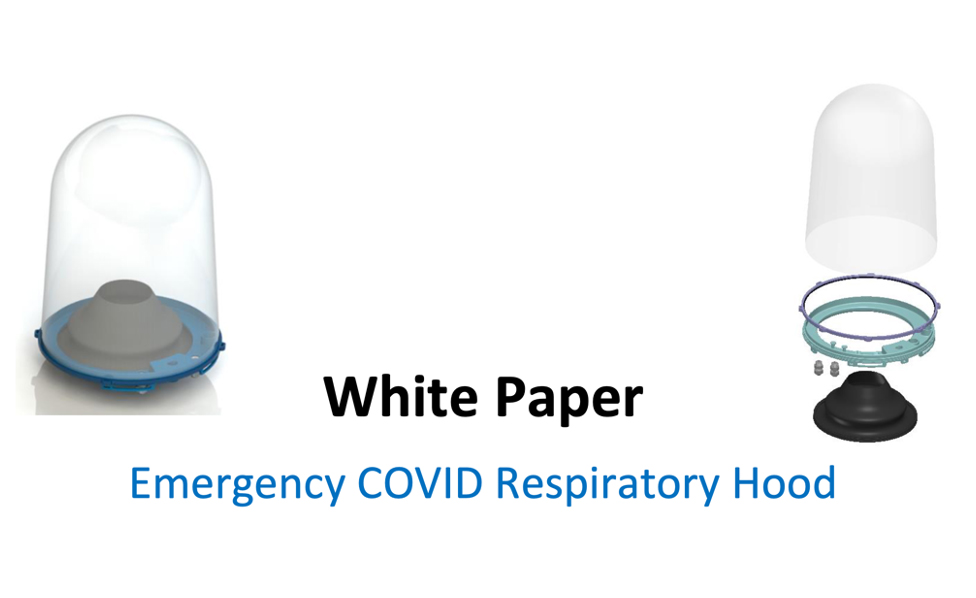How it works
Medical device designers Tim Jones and Jack Connolly explain how to set up a system for sharing ICU ventilators with individual tidal volume control

This architecture of this system has been designed so that it can be mostly replicated using equipment that already exists in most hospitals. Further development is underway on the sensor component and we will share when available.
Assembly instructions and component details can be found in the video above. Please go to our supplies section to get full details on compatible components and supplier details.
Schematic Diagram

Repurposing a Home BiPAP/CPAP Machine for COVID-19 Patients
Continuous Positive Airway Pressure (CPAP) is a therapy commonly administered on patients with respiratory difficulty in the home or ward setting, often in combination with supplementary oxygen. Machines are available for home use that can deliver increased pressure to assist breathing for a patient suffering from respiratory disease. These machines can deliver CPAP, which has been widely adopted in the treatment of Type 1 respiratory failure among COVID- 19 patients. However, care must be taken to minimize any risk of aerosolizing the virus to protect healthcare workers, while ensuring the patient can be administered with the required pressure settings and level of FiO2 as required by the caregiver.

Emergency COVID Respiratory Hood
Due to the global shortage of commercial respiratory hoods for the treatment of COVID-19 patients, a group of volunteer medical device engineers have investigated designs and techniques to allow emergency hoods to be fabricated using readily available materials by non-skilled personnel using basic tools.
It is hoped that this design may benefit medical teams who would otherwise not have access to this technology.
The following paper will detail the selected design, list the materials used and detail a step by step pictorial assembly method. The paper will describe the testing carried out on the design to date along with any lessons learnt by the team. The paper will attempt to describe the risks of this non-commercial prototype design which has not been rigorously tested. The paper will provide a link to the CAD files associated with the designs.


